Naloxone


What is it?
Naloxone hydrochloride is a drug that can temporarily reverse opioid overdose. It works by blocking opioid drugs, such as heroin and Oxy, from attaching to the opioid receptors in the brain. It can come in nasal spray, pre-filled syringes and ampoules and can be purchased at a local pharmacy.
Naloxone can be injected into a muscle or delivered by intranasal spray (basically far up into the nose). It can be administered by anyone, not just medical professionals. With injecting, there is a risk of contracting blood-borne viruses, such as hepatitis B & C and HIV if needles are shared and the risk of infection at the injecting site. It’s very handy to have around.
The effects of Naloxone are temporary and you should always seek emergency medical treatment for the averted overdose.
What are the effects?
Most side effects from naloxone are mild.
- Nausea and vomiting
- Sweating
- Trembling
- Nervousness
- Fast pulse
- Allergic reaction, with a swelling of the face, lips, tongue and throat
- Wheezy breathing
- Chest tightness
- Intense rash
- High blood pressure
- Irregular heartbeat
- Seizures
Overdose
People who have been revived with naloxone after overdosing on opioids may experience a strong urge to take more opioid drugs, especially if they are dependent. Taking opioid drugs after naloxone is very dangerous. Naloxone only stays in the body for a short period of time (30 – 90 minutes) whereas heroin and other opioid drugs stay in the body for much longer.
Opioids that have a sustained release, like Oxy, can last for over 12 hours, so naloxone will wear off long before the opioid has left the system. This means taking more opioids after taking naloxone could cause a second overdose.
If naloxone is used, then medical attention is needed immediately.
Mixing with other drugs
It’s best for us to avoid using any drugs when naloxone has been used. For more information about interactions head to Drugs.
HIV Medications
The interactions between naloxone and antiretroviral medications are not well known. There’s currently no evidence to suggest that naloxone use directly reduces the efficacy of antiretroviral medications. If some new research comes to light, then we’ll update this section and let you know.
We did find that naloxone dosages may need to be increased with particular protease inhibitors to reduce an overdose.
The interactions between naloxone and PrEP and PEP are not well known. There’s currently no evidence to suggest that naloxone use directly interacts with these medications or reduces their efficacy. We’ll keep looking and update you if any new research comes to light.
To learn about the interactions between specific HIV medications and naloxone head to Liverpool HIV Drug Interactions Checker.
Hormones
There’s currently no evidence to suggest that naloxone directly reduces the efficacy of HRT. We’ll keep looking and update this information if something new comes to light.
The interactions between naloxone and HRT are not well known.
For more information about Naloxone, head to the Australian Drug Foundation or Drugs.
DISCLAIMER:
The information given on this page is not medical advice and should not be relied upon in that way.